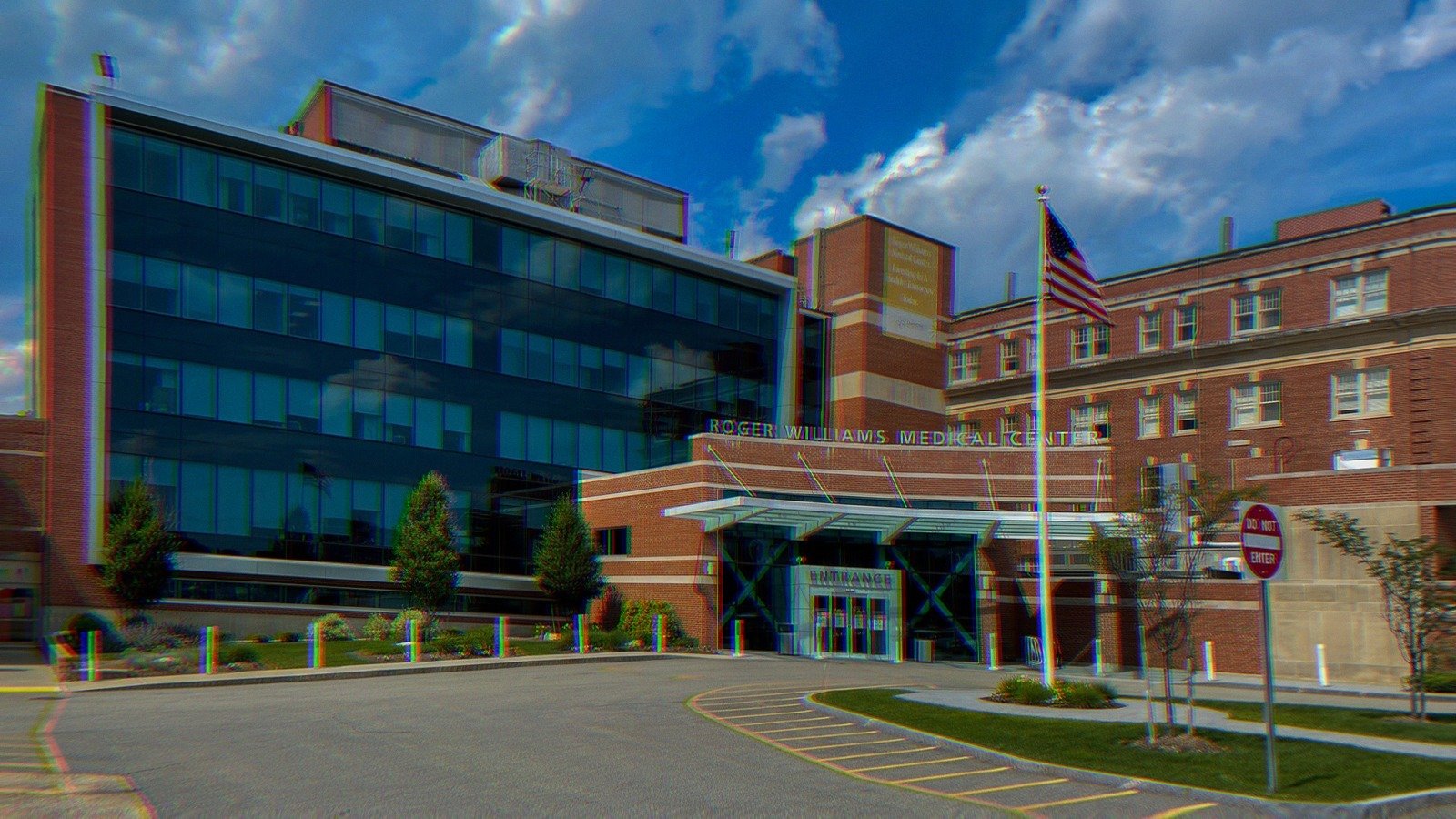How Private Equity Is Hollowing Out America’s Hospitals
 Image Description: Exterior shot of Roger Williams Medical Center in Providence, Rhode Island, owned by Prospect Medical Holdings.
Image Description: Exterior shot of Roger Williams Medical Center in Providence, Rhode Island, owned by Prospect Medical Holdings.
This essay appeared in the Oct. 7, 2025 edition of UNFTR’s premium newsletter. Become a UNFTR member to receive our bonus newsletter each week and for other perks.
Is there a vaccine that protects against capitalism?
Private equity firms are not only hollowing out hospitals across the country—they’re also contributing to worse patient outcomes, according to a Harvard University study published by Annals of Internal Medicine late last month.
Its authors found that patient deaths in emergency rooms were higher among hospitals acquired by a private equity firm compared to similar hospitals with no such takeover. The same study, made possible by federal funding (how’d MAHA let that happen?), also found that PE hospitals suffered from more sizable cuts to staffing and salaries.
“Staffing cuts are one of the common strategies used to generate financial returns for the firm and its investors,” said one of its authors, Zirui Song, associate professor of health care policy in the Blavatnik Institute at HMS and HMS associate professor of medicine at Massachusetts General Hospital.
The analysis itself was extensive, comparing more than 1 million ER visits and 121,000 ICU hospitalizations at 49 PE hospitals.
- Looking at Medicare beneficiaries, researchers found that PE hospitals had “seven additional deaths per 10,000 visits after acquisition relative to hospitals that were not acquired by private equity.”
- Following acquisitions, salaries declined by 18 percent in the emergency department and 16 percent in the ICU. Full-time staffing hospital-wide was reduced by an average of 11.6 percent and salaries by 16.6 percent, according to the findings.
“Private equity acquisitions in health care are often marketed as an effort to shore up struggling hospitals by providing needed capital investments to improve care,” Harvard University posted on its site. “However, in a 2024 study in JAMA Internal Medicine, Song and colleagues found that private equity firms are more likely to buy financially healthier hospitals, which are more capable of taking on the new debt while still generating revenue.”
Among the other critical findings: Patient transfers to other hospitals went up, and people spent less time in the ICU.
Private equity companies raise money from private investors to buy other companies, often load debt on top of them, and hope to sell them in the future for a profit.
According to the Private Equity Stakeholder Project, there are at least 488 PE-owned hospitals in the United States. For context, that’s 8.5 percent of all private hospitals and 22.6 percent of all proprietary for-profit hospitals, per its research. A little more than a quarter of these hospitals operate in historically underserved rural areas.
“Despite the threat they pose to critical healthcare services, private equity firms are largely able to operate in the shadows,” the Private Equity Stakeholder Project wrote. “Limited regulation of hospital ownership, particularly of the predatory financial practices sometimes employed by private equity investors, makes accurate and up-to-date data on private equity in hospitals difficult to generate and maintain.”
Following high-profile closures and controversies surrounding various PE hospitals, the Senate Budget Committee launched a bipartisan investigation into several firms and their respective practices.
Its final report, released in January, noted a “surge” in PE hospital acquisitions between 2009 and 2011, adding that PE activity is affecting “all walks of American life.” Critically, PE and other private funds now manage more than $13 trillion globally—up from less than $1 trillion in 2004.
The action isn’t only in hospitals, the Senate probe found. These firms have become ubiquitous, acquiring everything from hospitals, provider staffing companies, physician practices and hospice facilities to urgent care centers, behavioral health, dental offices, eye care, and physical therapy spaces.
Even the Senate, where sitting elected officials rely on monied interests to get elected, acknowledged that recent peer-reviewed studies have “generally found negative consequences for general acute care hospitals during the first three years of PE ownership as compared to non-PE-owned hospitals, including lower quality of care, increased transfers to other hospitals, decreased staffing and higher prices.”
One of the first major moves in the PE-healthcare space was Leonard Green & Partners (LGP), which owned the Prospect Medical Holdings hospital system from 2010 to 2021. Private Equity Stakeholder Project reported that LGP “siphoned hundreds of millions of dollars in dividends and fees from the hospital chain even as its hospitals suffered quality and operational issues that hurt patients and workers” before selling its stake in 2021.
The negative impacts were substantial. The organization reported that Prospect’s hospitals suffered from low quality ratings, three of its Connecticut hospitals were placed under review by state regulators for “deteriorating conditions,” executives were accused by the California Attorney General’s office of “gross negligence,” and more.
The Senate probe led to similar findings, writing that:
“LGP and PMH’s primary focus was on financial goals rather than quality of care at their hospitals, leading to multiple health and safety violations as well as understaffing and the closure of several hospitals. Current PMH leadership has overseen the closure of eight hospitals, with three-fourths of those coming during or directly after LGP’s majority ownership—including four in Texas and two in Pennsylvania. According to documents obtained by the Committee, discussion amongst PMH and LGP leadership during Board and committee meetings centered around profits, cost cutting, acquisitions, managing labor expenses, and increasing patient volume—with little to no discussion of patient outcomes or quality of care.”
And the cherry on top:
“Despite this financial and operational mismanagement of its hospitals, LGP took home $424 million of the $645 million that PMH paid out in dividends and preferred stock redemption during LGP’s majority ownership—in addition to over $13 million in fees—leaving PMH in severe financial distress.”
As for the financial health of these hospitals, these ostensible titans of finance appear to have a poor track record: about a fifth of healthcare companies that filed for bankruptcy in 2023 were owned by PE firms.
In case you were wondering—yes, our colonial system is already exporting this to other countries in desperate need of quality healthcare.
According to a Bloomberg investigation, the defunding of U.S. aid agencies by the Trump administration has potentially provided an opening for PE and other investment firms looking to cash in.
“The idea of using private equity firms to manage such investments is gaining momentum as the Trump administration has slashed budgets for the US Agency for International Development and proposed channeling foreign aid through Wall Street.”
Image Source
- Kenneth C. Zirkel, CC BY-SA 4.0, via Wikimedia Commons. Changes were made.
Rashed Mian is the managing editor of the award-winning News Beat podcast and co-founder of the newly launched Free The Press (FTP) Substack newsletter. Throughout his career, he has reported on a wide range of issues, with a particular focus on civil liberties, systemic injustice and U.S. hegemony. You can find Rashed on X @rashedmian and on Bluesky @rashedmian.bsky.social.


